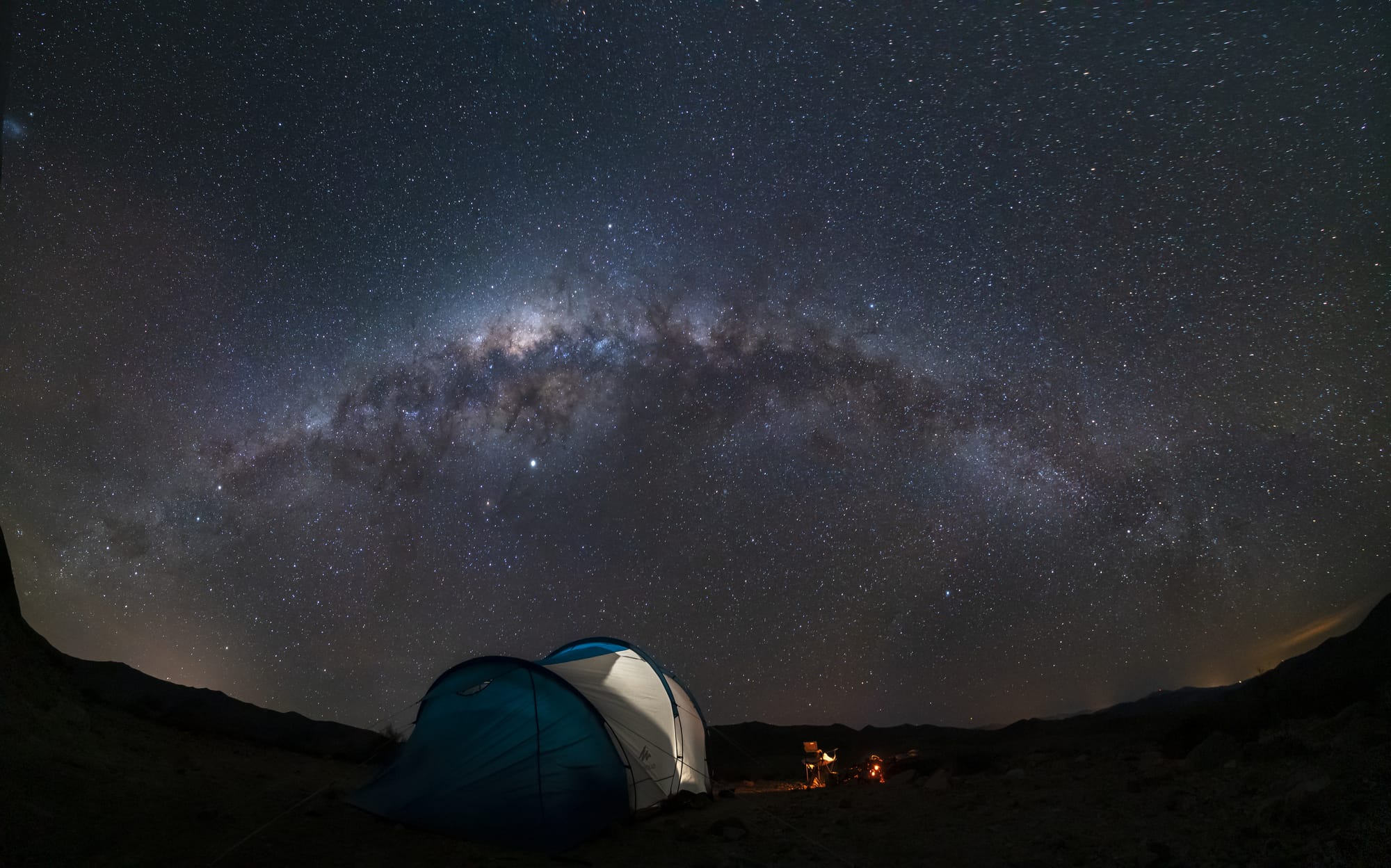Renowned for its high-altitude plateaus and arid landscapes, the Atacama Desert becomes an astronomical oasis due to its unique climatic conditions. The desert, located amidst the towering peaks of the Andes in a location with high elevation and minimal light pollution, offers an unparalleled canvas for observing the night sky. In this realm where celestial ►
Renowned for its high-altitude plateaus and arid landscapes, the Atacama Desert becomes an astronomical oasis due to its unique climatic conditions. The desert, located amidst the towering peaks of the Andes in a location with high elevation and minimal light pollution, offers an unparalleled canvas for observing the night sky. In this realm where celestial panorama unveils all its splendor: constellations, planets, and even our own luminous Milky Way swath, it's not just another spectacle but one that transcends ordinary experiences, truly immersive!
The Paranal Observatory, a sentinel symbolizing human ingenuity against the night's velvet backdrop, embodies the central astronomical allure of Atacama. It accommodates the Very Large Telescope (VLT), an array of four optical telescopes that work harmoniously and exploit exceptional conditions offered by desert life to explore universe mysteries. The VLT unravels secrets about distant galaxies, cosmic phenomena and enigmatic dark matter as it peers into space's depths.
Stargazers venturing into the Atacama find allure that extends past a telescope's eyepiece. The Atacama Large Millimeter/Submillimeter Array (ALMA), a desert plateau dotted with an array of radio telescopes, offers unique perspectives on our universe's cold and dark corners in complement to optical observations. Resembling cosmic sentinels, ALMA's antennas detect faint signals emitted by celestial bodies; this method unveils star birthplaces, interstellar cloud dynamics and life's organic building blocks' formation process, all simultaneously painting vivid pictures from afar through their diligent service.
The setting sun transforms the Atacama Desert into a nocturnal sanctuary, beckoning stargazers to contemplate in silence; its brilliance outshines more populated regions as it escapes from urban glow. Within this virgin night sky, vast and unblemished by artificial light, the Southern Cross, Magellanic Clouds and the southern celestial hemisphere jewels stand out prominently: vivid companions amidst an expanse painted black velvet.
The desert's natural beauty, amplifying the stargazing experience beyond just the technological marvels of observatories, presents itself as a terrestrial masterpiece. The Valle de la Luna, an otherworldly tableau featuring salt flats and artfully sculpted dunes, is our planet's mirrored response to cosmic drama overhead. A rising moon casts an ethereal glow over this valley; where distinctions between earthbound and celestial realms become indistinct, a poetic synergy emerges that propels stargazing experiences towards unprecedented heights.
The act of observing distant celestial bodies in the Atacama Desert transcends stargazing. It becomes an odyssey into the heart of the cosmos. Here, geography and climate unique to this desert converge, creating a celestial haven for those eager to unravel night sky mysteries. Amidst high-altitude plateaus and otherworldly landscapes, Atacama invites stargazers to look up and marvel at connecting with the timeless beauty ingrained within our universe.
◄
